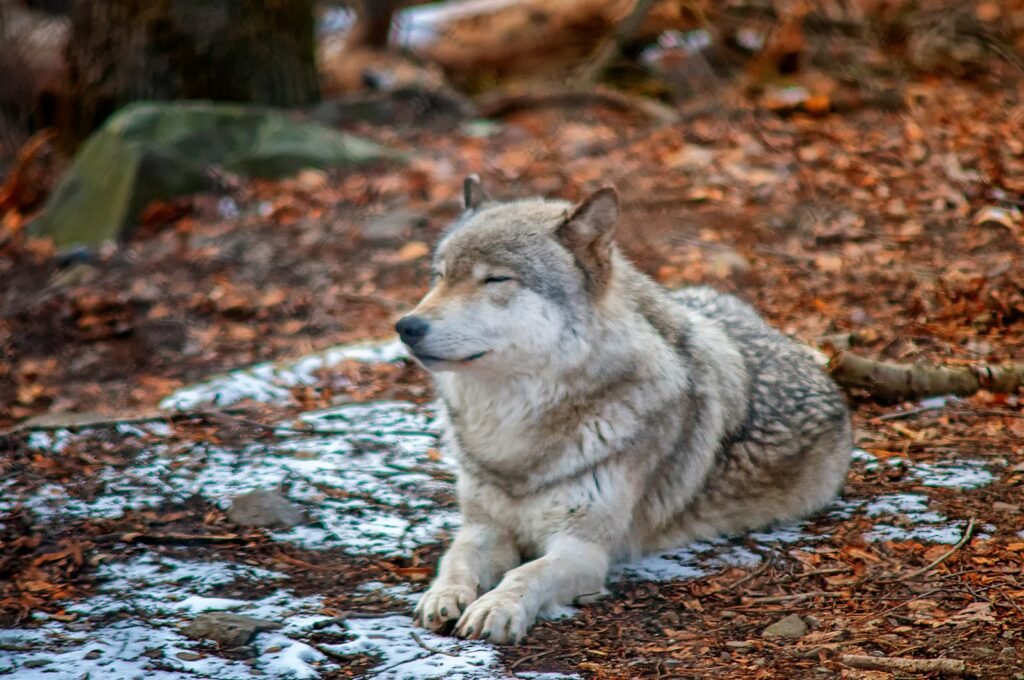Animal advocates are grieving and furious after the U.S. Fish and Wildlife Service (USFWS) confirmed the deaths of two critically endangered Mexican gray wolves—one of them a presumed pregnant mother and the other the breeding male of the pack.
The news has sparked national outrage, raising serious concerns about how the country’s rarest wolves are being managed by the very agency charged with protecting them.
A Loss With No Justification

The first wolf, known as AF1823 or “Asiza,” was the breeding female of Arizona’s Bear Canyon Pack. She was just seven years old and had been fitted with a tracking collar, which should have protected her. According to the removal order issued by the USFWS, only an uncollared wolf was targeted due to alleged livestock conflicts on public land.
But despite clear instructions, Asiza was shot and killed on April 14. Advocates say the mistake was preventable—and devastating.
“Asiza’s death is a huge setback,” said Leslie Williams and Samantha Attwood, founders of Team Wolf. “She was a pregnant mother and a vital part of her pack. With so few Mexican gray wolves left in the wild, each life carries incredible weight.”
The Tragedy Doesn’t End There

The tragedy didn’t end there. USFWS also authorized the killing of Viento, the alpha male of New Mexico’s Hail Canyon Pack. As a breeding male, Viento helped raise pups and maintain stability in the pack. His loss likely leaves behind orphaned young, including pups born this spring.
“The killing of Viento is infuriating and counterproductive,” said Regan Downey, director of education at the Wolf Conservation Center. “He was the adoptive father of Slides, a pup born at our center in 2023 and fostered into the Hail Canyon Pack as part of the federal recovery effort. We trusted the government with his care.”
Why It Matters

The Mexican gray wolf is one of the most endangered subspecies of wolf in the world. These wolves once roamed across the southwestern U.S. and northern Mexico. By the 1970s they had nearly gone extinct due to government-sponsored extermination campaigns from depredation and human conflict.
Thanks to intensive recovery efforts, they’ve slowly rebounded. Still, fewer than 260 remain in the wild today, and every individual plays a critical role in the fragile ecosystem.
According to the California Wolf Center, wolves are apex predators that help maintain healthy balance. Without them, prey species like elk and deer overpopulate, leading to habitat degradation. Their absence triggers a domino effect that harms everything from soil health to water quality.
A Growing Chorus of Concern
The outrage has triggered renewed calls for reform in how the USFWS handles predator conflicts on public lands. Conservation groups are demanding more transparency, stronger accountability, and non-lethal solutions for managing wolves.
They’re also urging collaboration with ranchers to explore coexistence strategies. The use of public lands for grazing is at the center of the debate, with critics arguing that these shared spaces must balance agricultural needs with wildlife protection.
What You Can Do

Animal lovers can take action by contacting lawmakers and urging them to support greater protections for endangered species. As organizations are calling for an investigation into this devastating mistake to help find answers as to why it happened in the first place.
For now, Asiza and Viento’s legacy is one of resilience—and a painful reminder of just how far we still have to go to live in harmony with the wild.






